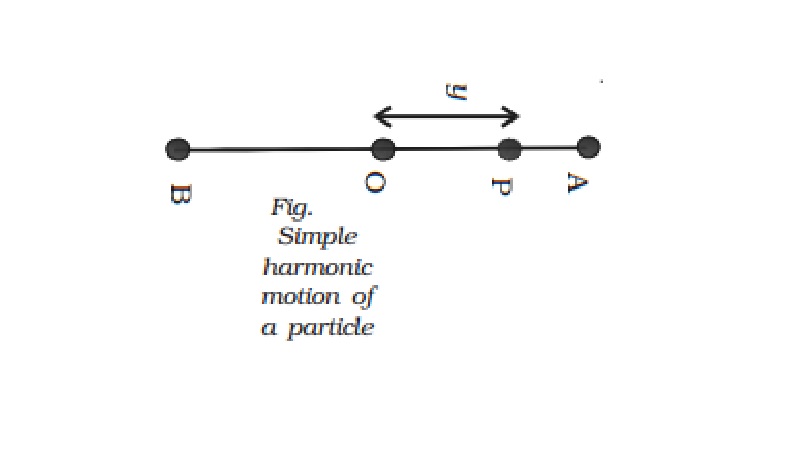Chapter: 11th 12th std standard Class Physics sciense Higher secondary school College Notes
Simple harmonic motion

Oscillations
Any motion that
repeats itself after regular intervals of time is known as a periodic motion. The examples of
periodic motion are the motion of planets around the Sun, motion of hands of a
clock, motion of the balance wheel of a watch, motion of Halley?s comet around
the Sun observable on the Earth once in 76 years.
If a body moves back
and forth repeatedly about a mean position, it is said to possess oscillatory motion. Vibrations of guitar
strings, motion of a pendulum bob, vibrations of a tuning fork, oscillations of
mass suspended from a spring, vibrations of diaphragm in telephones and speaker
system and freely suspended springs are few examples of oscillatory motion. In
all the above cases of vibrations of bodies, the path of vibration is always
directed towards the mean or equilibrium position.
The oscillations can
be expressed in terms of simple harmonic functions like sine or cosine
function. A harmonic oscillation of constant amplitude and single frequency is
called simple harmonic motion (SHM).
Simple harmonic motion
A particle is said to execute simple harmonic motion if its
acceleration is directly proportional to the displacement from a fixed point
and is always directed towards that point.
Consider a particle P executing SHM along a straight line
between A and B about the mean position O (Fig.). The acceleration of the
particle is always directed towards a fixed point on the line and its magnitude
is proportional to the displacement of the particle from this point.
Consider a particle P executing SHM along a straight line
between A and B about the mean position O (Fig.). The acceleration of the
particle is always directed towards a fixed point on the line and its magnitude
is proportional to the displacement of the particle from this point.
(i.e) a
α y
By definition a = −ω2 y
where ω is a constant known as angular frequency of the simple harmonic
motion. The negative sign indicates that the acceleration is opposite to the
direction of displacement. If m is
the mass of the particle, restoring force that tends to bring back the particle
to the mean position is given by
F
= −m ω2
y
or F = −k y
The constant k = m
ω2, is called force constant or spring constant. Its unit is N m−1. The restoring force is directed towards the
mean position.
Thus, simple harmonic motion is defined as
oscillatory motion about a fixed
point in which the restoring force is always proportional to the displacement
and directed always towards that fixed point.
Related Topics